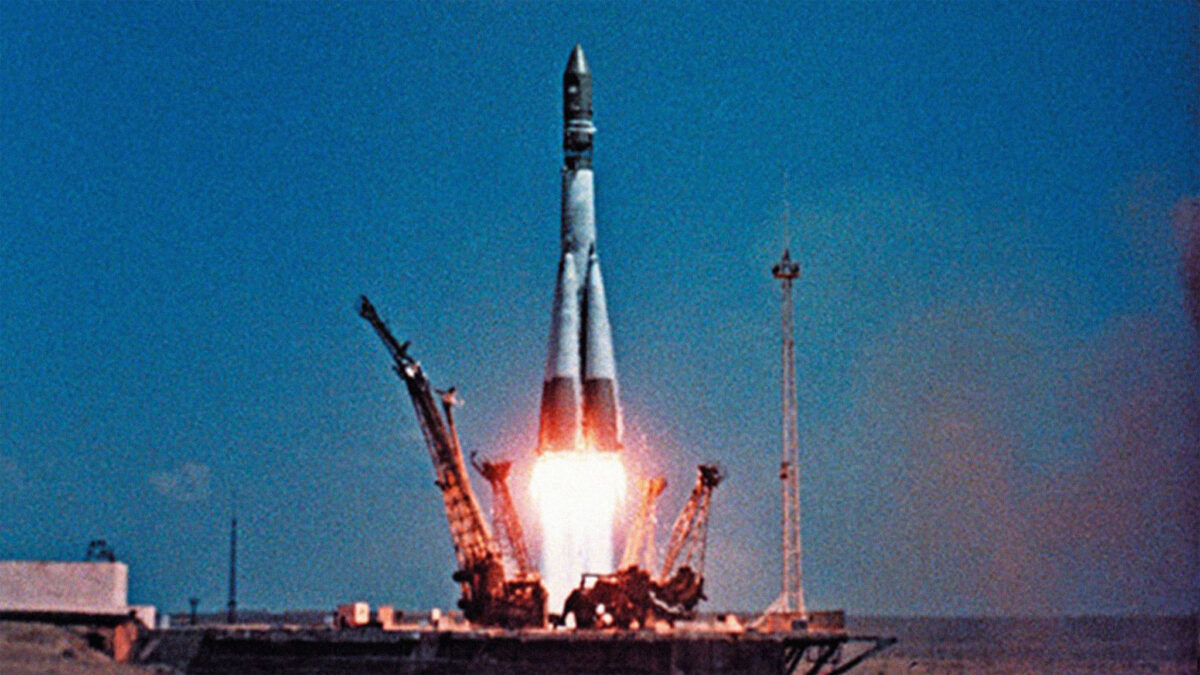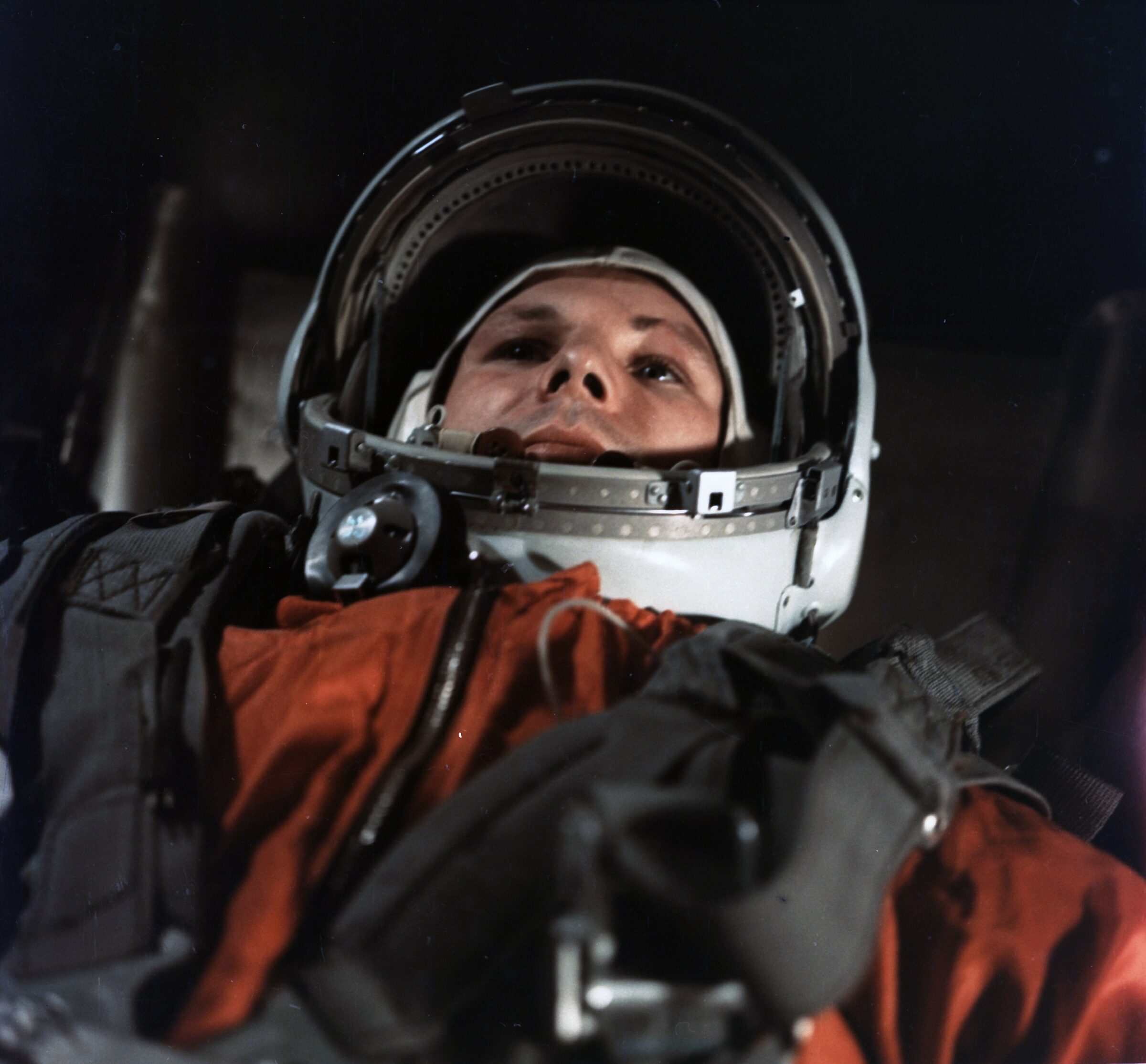Facts Worth Sharing
Yuri Gagarin became the first human to fly in space on 12 April 1961.
Gagarin launched from what is now Kazakhstan in his Vostok 1 spacecraft. He orbited Earth once and landed near the Russian city of Saratov.
Gagarin’s flight pushed the Soviet Union ahead in the Space Race with the United States. It also pushed President John F. Kennedy to declare that NASA would land humans on the Moon by 1970.
Why Yuri Gagarin’s Flight Happened
No nation had ever flown a human into space until the Soviet Union did it on 12 April 1961. Yuri Gagarin’s one-orbit flight in his Vostok 1 spacecraft ushered in a new era of spaceflight and scored a key victory for the Soviets, who were locked in a struggle for technological and ideological supremacy with the United States.
In the wake of World War II, the U.S. and Soviet Union became the world’s two superpowers. Each represented opposing societal beliefs: the U.S. a capitalist society that promised to reward individual effort, and the Soviets a socialist society that emphasized communal efforts.
Nuclear weapons proliferated until the two nations reached a stalemate under the threat of mutually assured destruction. If one side started a war, both would likely be destroyed, causing global devastation in the process.
The next high ground became space. Whoever controlled space would not only win a theoretical military advantage, but also secure an implied endorsement of their nation’s ideology.
The Soviets struck first by launching Sputnik, the world’s first artificial satellite, in 1957. The U.S. responded with Explorer 1 in 1958. The space capabilities of both nations grew until they were on the verge of launching humans.
Once again, the Soviets were first. Officially, the U.S. congratulated the Soviet Union for Gagarin’s 108-minute flight. Unofficially, pressure mounted to match the achievement. Just five days later, a U.S.-backed invasion of communist Cuba failed, dealing further embarrassment to the United States. On 20 April 1961, President John F. Kennedy asked Vice President Lyndon Johnson to report on the status of the space program and look for a way to match the Soviets’ accomplishment. Kennedy and his advisors eventually settled on the Moon as the goal, and on 25 May, just 3 weeks after NASA finally launched astronaut Alan Shepard into space on a brief suborbital flight, Kennedy introduced what would become the Apollo program during an address to Congress:
“I believe that this nation should commit itself, to achieving the goal, before this decade is out, of landing a man on the moon, and returning him safely to the Earth. No single project in this period will be more impressive to mankind, or more important for the long-range exploration of space. And none will be so difficult or expensive to accomplish.”
The U.S. eventually caught up with and surpassed the Soviet Union in the ensuing race to the Moon. The Soviets would go on to have great success with their Salyut and Mir space station programs, paving the way for Russia and the U.S. to work together on the International Space Station after the Soviet Union collapsed in 1991.

How Vostok 1 Worked
The rocket that blasted Vostok 1 and Yuri Gagarin into orbit was derived from the Soviet Union’s R-7 Intercontinental Ballistic Missile, or ICBM. Originally designed to launch nukes at the United States, the rocket was repurposed to handle human cargo.
Gagarin was a senior lieutenant in the Soviet air force when the government selected him and 19 other pilots to join the first cosmonaut training program. He was eventually chosen for the Vostok 1 flight due to his skill and the fact that he was short (1.57 meters, or 5’2”), which allowed him to fit more easily into his cramped capsule.
Vostok 1 consisted of a pressurized sphere just 2 meters wide, along with an equipment module that housed electronics and the thrusters that would be used to bring the vehicle back to Earth. In the event that the reentry thrusters failed, Gagarin would have reentered Earth’s atmosphere naturally after 10 days. He brought with him enough food and supplies to stay alive if that happened.
Gagarin launched from what is now the Baikonur Cosmodrome in Kazakhstan. At that point the site was named Tyratam after a nearby rail station in an attempt to confuse the West about the exact purpose of the launch site. The pad where Vostok 1 blasted off is now named Gagarin’s Start and is still used for crewed Soyuz launches.
Gagarin and Vostok 1 launched around midday. Shortly after liftoff, the cosmonaut famously yelled “Poyekhali!” over the radio, which in English roughly translates to “Let’s roll!” He entered orbit a few minutes later and was able to see the Earth through a single window near his feet.
Most of the flight was automated, though Gagarin had the ability to take manual control of his spacecraft in an emergency. As Vostok 1 prepared to reenter Earth’s atmosphere, the vehicle jettisoned its equipment module as planned. However, the module did not fully separate and was left attached to Gagarin’s capsule by a strand of wires.
The extra weight threw Gagarin into a spin, causing him to experience 8 Gs of force—far more than expected during a normal flight. As a trained fighter jet pilot, he was able to maintain consciousness until the wires holding on to the equipment module broke free, stabilizing his descent.
At about 7 kilometers above the Earth, Gagarin ejected from Vostok 1 as planned and parachuted to the ground. A local farmer and his daughter observed the spherical metal ball of Vostok 1 smashing into the ground, followed by Gagarin gently floating in for a landing in his orange flight suit. Gagarin later recalled: "When they saw me in my space suit, they started to back away in fear. I told them, don't be afraid, I am a Soviet citizen like you, who has descended from space and I must find a telephone to call Moscow!"


 Explore Worlds
Explore Worlds Find Life
Find Life Defend Earth
Defend Earth


